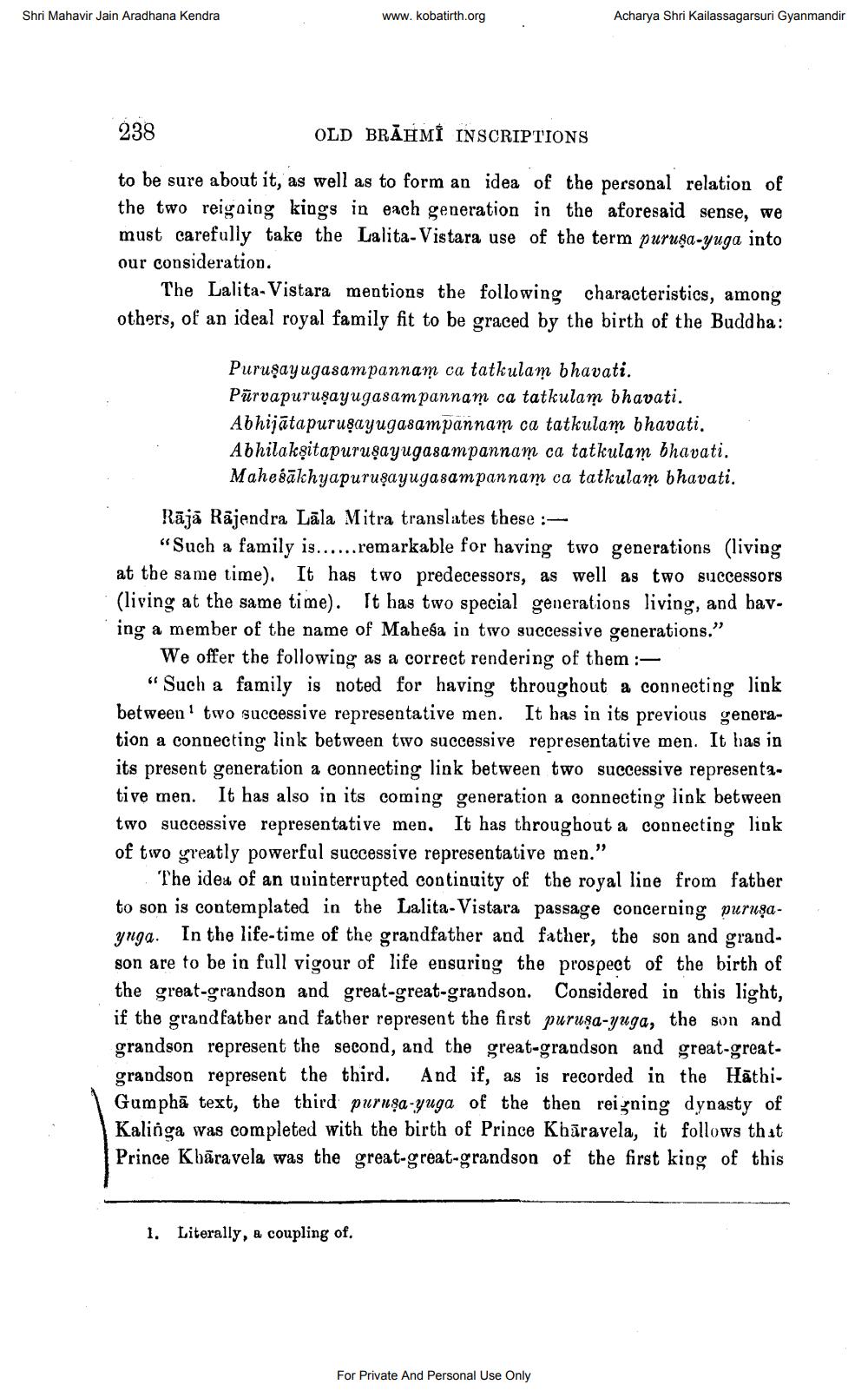________________
Shri Mahavir Jain Aradhana Kendra
www.kobatirth.org
238
OLD BRAHMI INSCRIPTIONS
to be sure about it, as well as to form an idea of the personal relation of the two reigning kings in each generation in the aforesaid sense, we must carefully take the Lalita-Vistara use of the term purusa-yuga into our consideration.
Acharya Shri Kailassagarsuri Gyanmandir
The Lalita-Vistara mentions the following characteristics, among others, of an ideal royal family fit to be graced by the birth of the Buddha:
Puruşayugasampannam ca tatkulam bhavati. Purvapuruşayugasampannam ca tatkulam bhavati. Abhijatapuruṣayugasampannam ca tatkulam bhavati. Abhilakṣitapuruşayugasampannam ca tatkulam bhavati.
Mahesakhyapuruṣayugasampannam ca tatkulam bhavati.
Rājā Rajendra Lala Mitra translates these :
"Such a family is......remarkable for having two generations (living at the same time). It has two predecessors, as well as two successors (living at the same time). It has two special generations living, and having a member of the name of Mahesa in two successive generations."
1. Literally, a coupling of.
We offer the following as a correct rendering of them :
"Such a family is noted for having throughout a connecting link between two successive representative men. It has in its previous generation a connecting link between two successive representative men. It has in its present generation a connecting link between two successive representative men. It has also in its coming generation a connecting link between two successive representative men. It has throughout a connecting link of two greatly powerful successive representative men."
The idea of an uninterrupted continuity of the royal line from father to son is contemplated in the Lalita-Vistara passage concerning purusayuga. In the life-time of the grandfather and father, the son and grandson are to be in full vigour of life ensuring the prospect of the birth of the great-grandson and great-great-grandson. Considered in this light, if the grandfather and father represent the first purusa-yuga, the son and grandson represent the second, and the great-grandson and great-greatgrandson represent the third. And if, as is recorded in the HathiGumpha text, the third purusa-yuga of the then reigning dynasty of Kalinga was completed with the birth of Prince Kharavela, it follows that Prince Kharavela was the great-great-grandson of the first king of this
For Private And Personal Use Only




